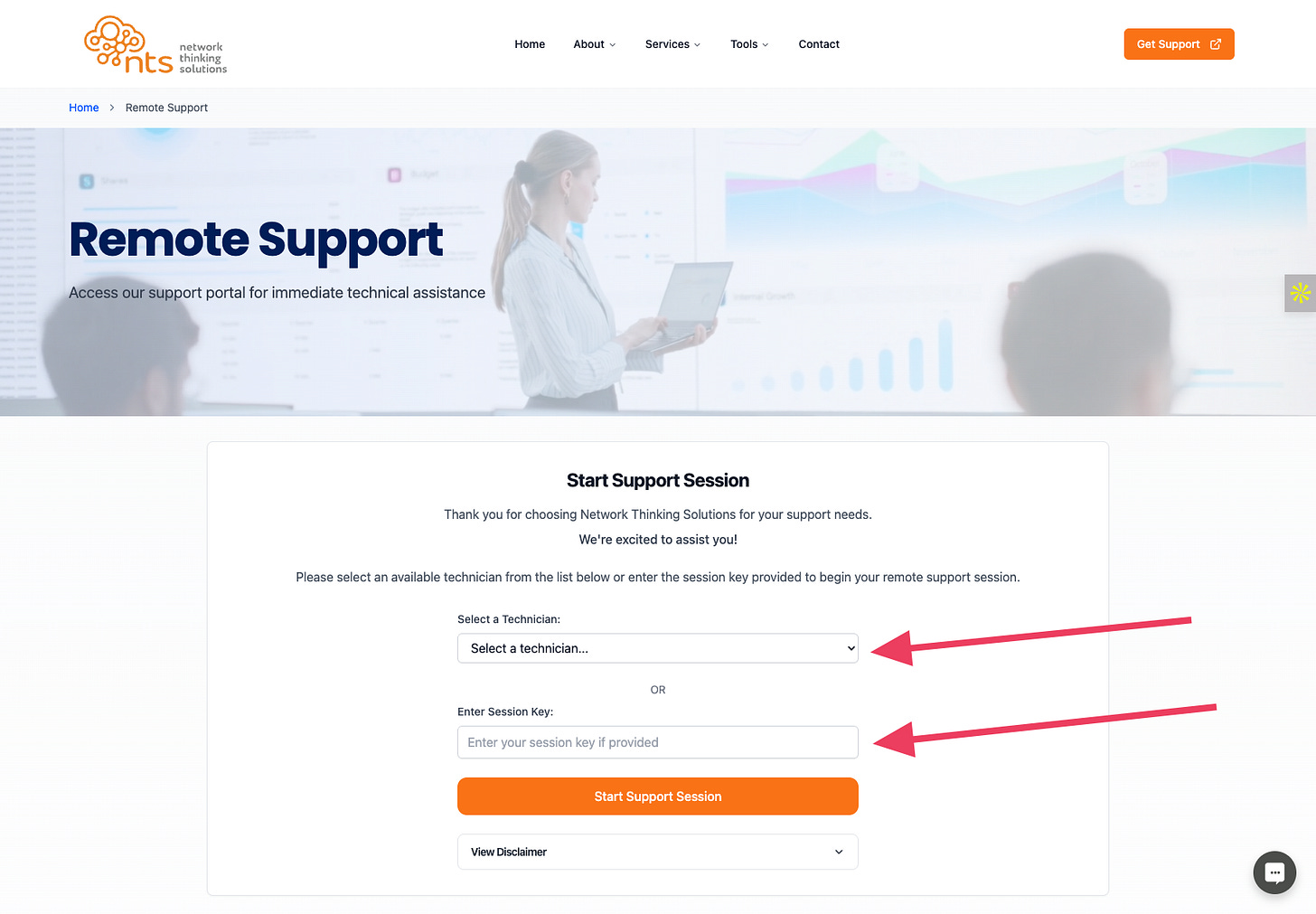Moving BeyondTrust Remote Support to Our Website with API + Supabase
Moving all of our tools to the new website
Background
Our initial goal was to provide a seamless remote support experience by embedding the BeyondTrust (Bomgar) support portal directly into our website, networkthinking.com. However, BeyondTrust explicitly prohibits embedding its portal into third-party sites to mitigate cross-site scripting (XSS) risks. They typically have customers use an external page, which has served us well, but prevents integration into a standard website. Your limited what you can do on that page.
Because of this limitation, we pivoted to using the BeyondTrust API, which allowed us to securely recreate the support workflows on our own platform.
About BeyondTrust Remote Support (Bomgar)
BeyondTrust Remote Support, formerly known as Bomgar, is an enterprise-grade remote support solution designed for IT teams, help desks, and service providers. It allows technicians to securely access desktops, laptops, servers, and mobile devices across multiple platforms—whether users are on or off the corporate network. Key features include session recording for compliance, support for Windows, macOS, Linux, iOS, and Android, seamless integration with ticketing systems, and advanced security controls such as granular permissions and audit trails. The main benefits are faster problem resolution, reduced downtime, enhanced end-user satisfaction, and compliance-ready security that meets enterprise and regulatory standards
Technical Approach
Phase 1 – Local Node.js API Server
I began with a lightweight Node.js server that handled communication with the BeyondTrust API. This server:
Fetched available representatives in real time.
Generated session keys on demand.
Provided API endpoints to the frontend for listing reps and starting sessions.
The first version was a simple HTML page (support.html) where reps were listed and clients could start sessions directly
Phase 2 – Extending for Flexibility
Our support team needed more options than just a rep list. They also required:
A “General Support” session that automatically generates a session key.
A manual session key entry for clients provided with keys.
I extended the backend and frontend to support both flows, giving clients flexibility in how they start sessions.
Phase 3 – AI-Assisted Migration to Supabase
To reduce overhead from hosting a separate backend, I used AI-powered tools to accelerate development:
ChatGPT was used to troubleshoot API flows, refine Node.js logic, and assist in translating backend code into Supabase Edge Functions.
Cursor (AI coding environment) helped convert the Node.js server into a Supabase Edge Function, making the system fully serverless.
Lovable (AI UI generator) was used to modernize the frontend. It transformed the original support.html into a branded index.html consistent with our website’s look and feel.
This AI-assisted workflow let us move quickly from prototype to production without a large development investment
.
Final Implementation
The finished version provides a smooth, branded support experience:
Real-time technician availability pulled from BeyondTrust.
A “General Session” option that instantly generates a session key and launches the support client.
Manual session key entry for pre-created sessions.
Modern UI aligned with our brand, powered by AI-assisted frontend design.
No backend server to maintain—Supabase Edge Functions handle the API logic.
Key Benefits
Security-first design: Compliant with BeyondTrust restrictions while avoiding XSS risks.
AI-accelerated development: ChatGPT, Cursor, and Lovable enabled rapid prototyping, troubleshooting, and design alignment.
Client-first experience: Multiple entry points into support sessions (general, rep-specific, or key-based).
Operational efficiency: No more dedicated backend server; Supabase handles scaling and availability.
Brand consistency: The interface matches our website, creating a seamless client journey.
👉 This project shows how combining APIs, serverless functions, and AI-powered development tools can transform a vendor’s restricted support portal into a custom, branded, and modern client experience.
Viktoriia Krasikova did a great job on this project, taking on the lion's share of the work.





